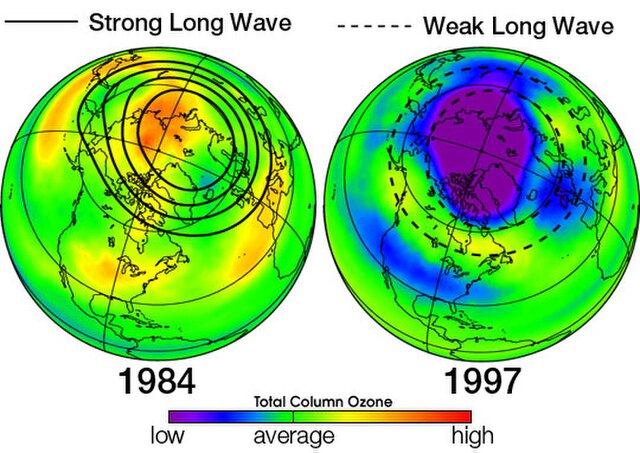Mario José Molina Henríquez was a Mexican physical chemist. He played a pivotal role in the discovery of the Antarctic ozone hole, and was a co-recipient of the 1995 Nobel Prize in Chemistry for his role in discovering the threat to the Earth's ozone layer from chlorofluorocarbon (CFC) gases. He was the first Mexican-born scientist to receive a Nobel Prize in Chemistry and the third Mexican-born person to receive a Nobel prize.
Molina in 2011
Mario Molina
Molina at the 2011 Nobel Laureate Globalsymposium
Molina (left) with his countryman Luis E. Miramontes, co-inventor of the first oral contraceptive, c. 1995
Ozone depletion consists of two related events observed since the late 1970s: a steady lowering of about four percent in the total amount of ozone in Earth's atmosphere, and a much larger springtime decrease in stratospheric ozone around Earth's polar regions. The latter phenomenon is referred to as the ozone hole. There are also springtime polar tropospheric ozone depletion events in addition to these stratospheric events.
Lowest value of ozone measured by TOMS each year in the ozone hole
Ozone hole in North America during 1984 (abnormally warm, reducing ozone depletion) and 1997 (abnormally cold, resulting in increased seasonal depletion). Source: NASA
Ozone levels stabilized in the 1990s following the Montreal Protocol, and have started to recover. They are projected to reach pre-1980 levels before 2075.






